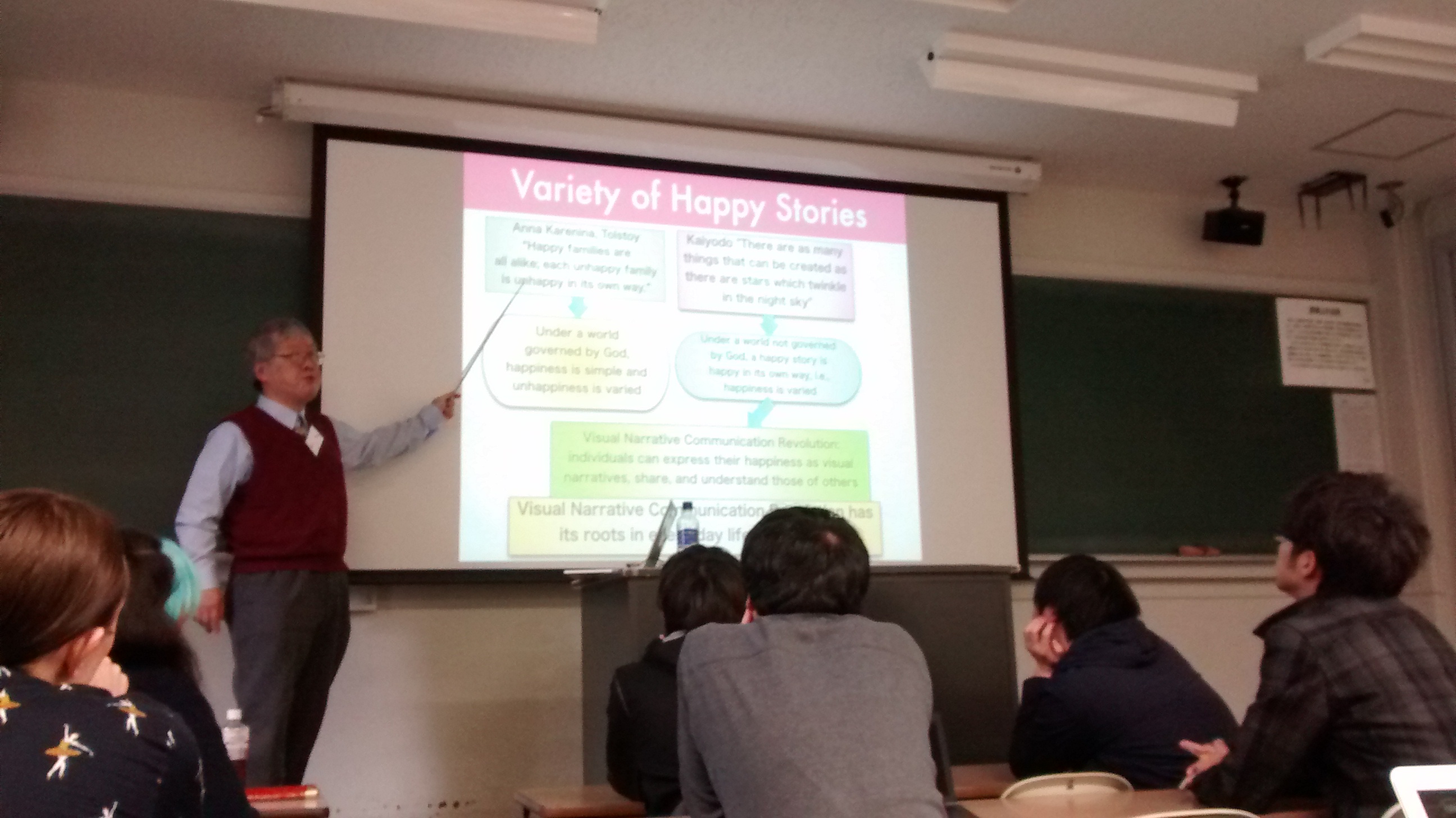I attended the 2016 edition of the Mechademia Conference in Tokyo last week-end. It was a great occasion to hear some great papers on manga and anime that I know very little of. I also had the chance to meet various important people of the Japanese cultural scene. One of them was the venerable critic Hiroshi Deguchi, researcher at the Tokyo Institute of Technology and long-time member of the Comic Market organizational committee. I took some note during his keynote address entitled « Japanese Manga and Cultural Diversity ».
Mr. Deguchi’s talk demonstrated how the world of manga is providing diversity in the form of alternative « life world » narratives that challenges traditional notions such as family or gender roles. However, these narratives are not produced by artists working within the mainstream manga culture, but from the fringes often associated with the otaku subculture. Otaku culture, therefore, is interpreted as resolutely post-modern in the way it encourages self-expression and the quest for individual happiness unbounded by any « arbiters of meaning ».
It is here that his talk took an interesting turn. Mr. Deguchi’s other important point was to establish that the representatives of high culture, those who usually shun the seemingly derivative subcultural productions, are supporting a hierarchical system that is « artificial » within the Japanese context. Mr. Deguchi demonstrated how Japanese visual culture in the Edo period was characterized by some of the aspects that are usually associated to Japanese dôjin culture such as the heavy emphasis on mundane subject matters and eroticism. It is only after Western cultural standards started permeating the Japanese cultural landscape in the 20th century that a distinction between high and low art was established. Referencing Walter Benjamin’s concept of the « aura » of a work of art, Mr. Deguchi stated that in the case of dôjin derivative works, there is no question wether an « aura » is present or not within a reproduced work (print or otherwise), rather, the « aura » is to be found within the dôjin activity itself. In other words, in the production itself. That « aura » is defined by a sense of belonging to a community of like-minded people who create derivative work for the pleasure of engaging within a community.
Mr. Deguchi’s association of post-modern subculture and traditional Edo visual culture as a way to legitimize otaku productions and situate them as the contemporary embodiment of the « real » Japanese culture is not completely new as far as I know. I remember a similar argument made by Murakami Takashi within the theoretical groundings of the Superflat movement by linking Ukiyo-e aesthetics and contemporary animation. However, what Mr. Deguchi’s talk made more explicit was the how the diversity of narratives created by fringe manga artists is directly in line with current sensibilities regarding representation politics.

Konbini-kun, the life of convenience store clerks
In itself, this interpretation bridges with Western academia in an interesting fashion. It is true that some of the examples provided during the talk put emphasis on how queer life worlds and non-normative life styles can be represented in positive way within fringe subculture, but I can foresee the limits of this discourse for foreign intellectuals. Japan is often the object of criticism due to its tolerance of manga featuring sexual violence (of any kind), and, more recently, such criticism came from the UN directly. The question of whether this judgement is legitimate or not is still up in the air and, in Japan, the UN’s report is itself being denounced. It seems that diversity and representation politics are often challenging concepts to negotiate between Western countries and Japan. I am looking forward to see how academics will address the subject in years to come.

